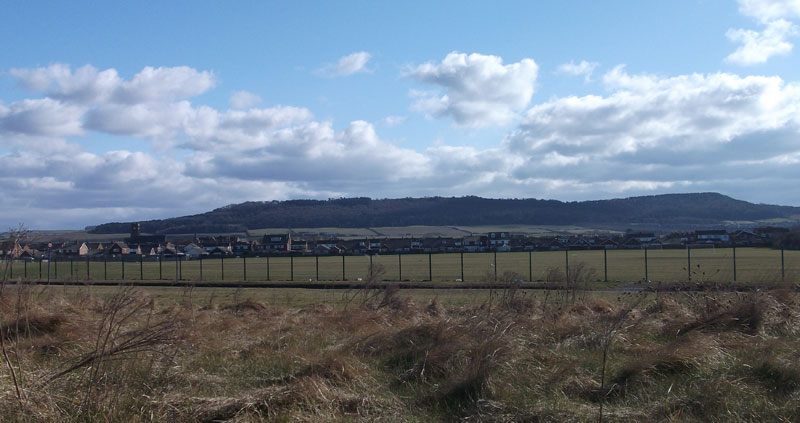On the night of 15th / 16th November 1941 the crew of this 218 Squadron aircraft undertook an operational flight to bomb Kiel. They took off from from Marham, Norfolk at 21.41hrs and were one of 47 aircraft that were despatched for the raid. Only eight crews reported bombing the target area because of cloudy conditions over the target. Whether this crew released their bomb load successfully isn't yet known. On their return to England this aircraft drifted too far north because of bad weather. Suffering from engine failure compounded by severe icing on the aircraft's surfaces, the pilot, being unable to keep in control, was forced to land the aircraft in a field near New Marske at 06.00hrs, one assumes fairly soon after crossin the coast. The aircraft unfortunately over-ran the selected field and appears to have ran into woodland, the fuselage broke in two while the nose and underside of the aircraft were badly damaged. Sadly one of the crew sustained serious injuries and died. Two others were also injured and the remaining three airmen appear to have escaped unhurt.
Wellington Z8853 was built to contract B71441/40 by Vickers Armstrongs Ltd at Weybridge. It was allotted to 8 MU on 17th July 1941 and was received by them on 18th August 1941. It was then taken on charge by 311 Squadron at East Wretham on 29th July 1941. It was then transferred to 9 Squadron at Honington on 31st August 1941 but on 8th September 1941 it received operational battle damage on Ops to Berlin that saw fuel tanks holes. Minor Cat.Ac was the assessment by No.43 Group D.A. and a repair on site begun on 11th September 1941. Ten days later the repair was complete and it was returned to 9 Squadron. On 6th October 1941 it was transferred to 115 Squadron at Marham and then briefly to 40 Squadron at Alconbury on 18th October 1941 but was left behind in the UK when the unit moved to Luqa at the end of October 1941. The aircraft was then returned to 115 Squadron on 28th October 1941. It's final transfer was to 218 Squadron, also at Marham, but the date they took it on charge is not known. It was written off with Cat.E2/FB damage being the damage assessment following the incident at Marske on 16th November 1941. The aircraft was badly damaged but the accident report states that both engines were assessed as reusable and salvaged. The aircraft was struck off charge on 22nd November 1941 once the paperwork caught up.
Pilot - Sgt R A Forsyth RCAF (R/65238).
Second Pilot - Sgt George Niven Niblo RCAF (R/58479). Suffered a broken leg.
Observer - Sgt Derrick Birks RAFVR (1154263).
Wireless Operator / Air Gunner - Sgt Alexander Bruce Gordon RAFVR (921998). Injured.
Wireless Operator / Air Gunner - Sgt Charles Lloyd Allan Collins RAFVR (1254914), aged 21, of Harrow, Middlesex. Buried Harrow (Pinner) New Cemetery, Middlesex.
Rear Gunner - Sgt Frederick Herbert Slatford RAFVR (1183344).
Gordon Niblo probably died in 1962 in British Columbia, Canada.
Sgt Slatford was still serving with 218 Squadron and flying in Stirling W7535 when he was killed on Ops on 30th May 1942. He is buried at Dreux Communal Cemetery, France. He was still only twenty one years old.

Errington Wood is the large area of woodland across the whole of this photograph, the aircraft is believed to have struck the ground towards the left side of the photograph.
In Peter Clark's "An Unexpected Foe" book he incorrectly stated that Wellington Z8853 crashed in the Yorkshire Dales, near Marske, Richmond. He selected the wrong Marske as the crash location. A simple check of the death registration district of Sgt Collins would have confirmed the Marske/Redcar location to have been correct. The site he links as being Wellington Z8853 was infact a Blenheim and the witnesses he located refer to the crashed Blenheim.